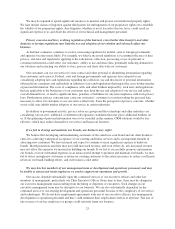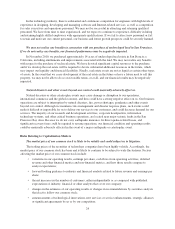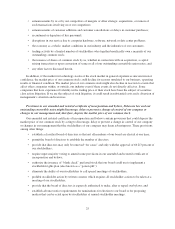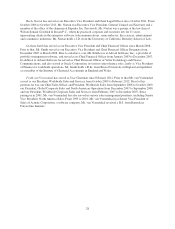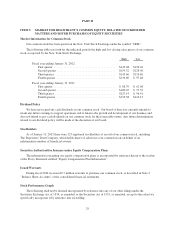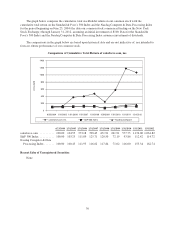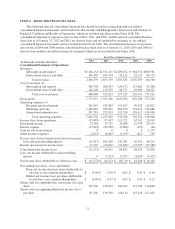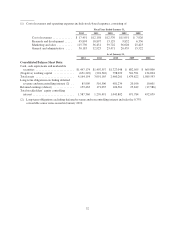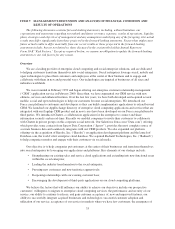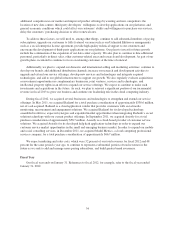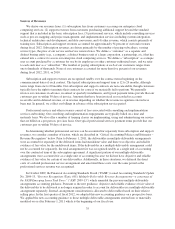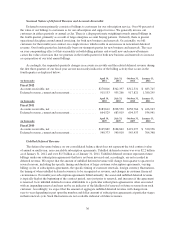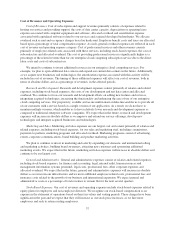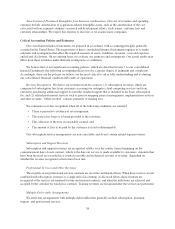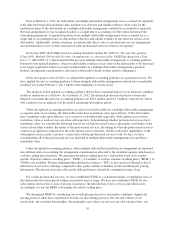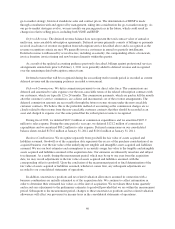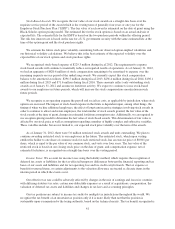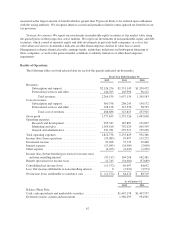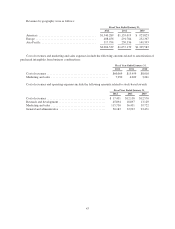Salesforce.com 2012 Annual Report Download - page 37
Download and view the complete annual report
Please find page 37 of the 2012 Salesforce.com annual report below. You can navigate through the pages in the report by either clicking on the pages listed below, or by using the keyword search tool below to find specific information within the annual report.ITEM 7. MANAGEMENT’S DISCUSSION AND ANALYSIS OF FINANCIAL CONDITION AND
RESULTS OF OPERATIONS
The following discussion contains forward-looking statements, including, without limitation, our
expectations and statements regarding our outlook and future revenues, expenses, results of operations, liquidity,
plans, strategies and objectives of management and any assumptions underlying any of the foregoing. Our actual
results may differ significantly from those projected in the forward-looking statements. Factors that might cause
future actual results to differ materially from our recent results or those projected in the forward-looking
statements include, but are not limited to, those discussed in the section titled of this Annual Report on
Form 10-K “Risk Factors.” Except as required by law, we assume no obligation to update the forward-looking
statements or our risk factors for any reason.
Overview
We are a leading provider of enterprise cloud computing and social enterprise solutions, and are dedicated
to helping customers transform themselves into social enterprises. Social enterprises leverage social, mobile and
open technologies to place their customers and employees at the center of their business and to engage and
collaborate with them in new and powerful ways. Our technologies are targeted at businesses of all sizes and
industries worldwide.
We were founded in February 1999 and began offering our enterprise customer relationship management
(“CRM”) application service in February 2000. Since then, we have augmented our CRM service with new
editions, services and enhanced features. Over the last few years, we have both developed and acquired several
mobile, social and open technologies to help our customers become social enterprises. We introduced our
Force.com platform to customers and developers so they can build complementary applications to extend beyond
CRM. We launched our AppExchange directory of enterprise cloud computing applications and services that are
integrated with our flagship CRM product and in most cases have been developed on our Force.com platform by
third parties. We introduced Chatter, a collaboration application for the enterprise to connect and share
information securely and in real-time. Recently we enabled companies to invite their customers to collaborate
with Chatter in private groups on this corporate social network. Our Salesforce Data.com (“Data.com”) offering,
which provides some contacts from Jigsaw Data Corporation (“Jigsaw”), provides the most complete source of
accurate business data and seamlessly integrates with our CRM products. We also expanded our platform
offering via the acquisition of Heroku, Inc. (“Heroku”) an application development platform and the launch of
Database.com, the world’s first enterprise cloud database. We acquired Radian6 Technologies, Inc. (“Radian6”)
to help companies monitor and engage with their customers via social media.
Our objective is to help companies put customers at the center of their businesses and transform themselves
into social enterprises by leveraging our applications and platforms. Key elements of our strategy include:
• Strengthening our existing sales and service cloud applications and extending into new functional areas
within the social enterprise;
• Leading the industry transformation to the social enterprise;
• Pursuing new customers and new territories aggressively;
• Deepening relationships with our existing customer base;
• Encouraging the development of third-party applications on our cloud computing platforms.
We believe the factors that will influence our ability to achieve our objectives include our prospective
customers’ willingness to migrate to enterprise cloud computing services; the performance and security of our
service; our ability to continue to release, and gain customer acceptance of, new and improved features; our
ability to successfully integrate acquired businesses and technologies; successful customer adoption and
utilization of our service; acceptance of our service in markets where we have few customers; the emergence of
33


